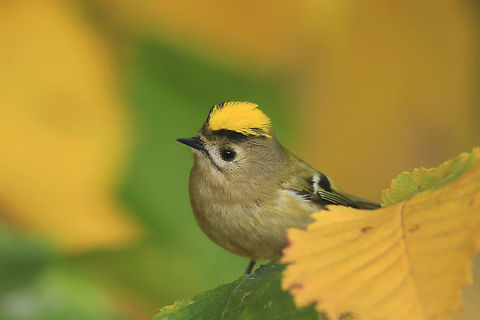
Appearance
The Goldcrest is the smallest European bird, 8.5–9.5 cm in length, with a 13.5–15.5 cm wingspan and a weight of 4.5–7.0 g.It is similar in appearance to a warbler, with olive-green upperparts, buff-white underparts, two white wing bars, and a plain face with conspicuous black irises. The crown of the head has black sides and a narrow black front, and a bright crest, yellow with an orange centre in the male, and entirely yellow in the female; the crest is erected in display, making the distinctive orange stripe of the male much more conspicuous.
The small, thin bill is black, and the legs are dark flesh-brown. Apart from the crest colour, the sexes are alike, although in fresh plumage, the female may have very slightly paler upperparts and greyer underparts than the adult male. The juvenile is similar to the adult, but has duller upperparts and lacks the coloured crown.
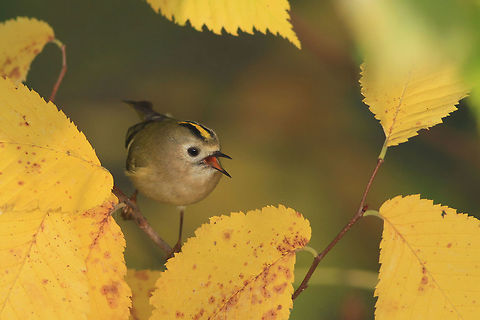
Status
The Goldcrest has a large range, estimated at 13.2 million km2 and a total population estimated at 80–200 million individuals, and it is therefore classed as Least Concern on the IUCN Red List.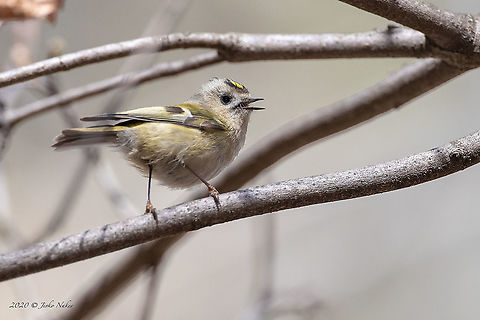
Habitat
Throughout its range, ''Banksia serrata'' is found on well-drained sandy soils that are low in nutrients, and is often found on stabilised soil near the coast but just behind the main dune system. In the Sydney region it is found with other typical woodland species, including yellow bloodwood, red bloodwood, silvertop ash, blue-leaved stringybark and Sydney peppermint.In the Upper Myall River region, ''B. serrata'' grows in dry sclerophyll forest on sandy soils that have recently formed or in shallow soils over differing substrates, while its close relative ''B. aemula'' grows on dry heath forest that occurs on ancient Pleistocene sands that have not been disturbed in 125,000 years. In intermediate communities both species are found.
''Banksia serrata'' is a component of the Eastern Suburbs Banksia Scrub, designated an endangered ecological community. This community is found on windblown sands which are younger than the heathlands to the north.
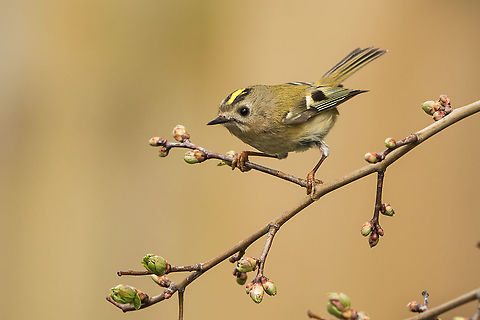
Reproduction
The Goldcrest is monogamous. The male sings during the breeding season, usually while foraging rather than from a perch. It has a display which involves bowing its head towards another bird and raising the coloured crest.A male Goldcrest will defend his territory against either species, sometimes including some Firecrest phrases in his song.
The Goldcrest's nest is a well-insulated cup-shaped structure built in three layers. The nest's outer layer is made from moss, small twigs, cobwebs and lichen, the cobwebs also being used to attach the nest to the thin branches that support it.
The middle layer is moss, which is lined by an inner layer of feathers and hair. The nest is larger, shallower and less compact than that of the Firecrest, with an internal diameter of about 9.0 cm, and is constructed by both sexes, although the female does most of the work.
It is often suspended from a hanging branch, usually at no great height, although Eric Simms reported nests at heights from 1.0–22 m. One pair built their nest just 1.0 m above that of a Sparrowhawk.
Laying starts at the end of April into early May. The eggs are whitish with very indistinct buff, grey or brown markings at the broad end. The eggs are 14 × 10 mm and weigh 0.8 g, of which 5% is shell.
The clutch size in Europe is typically 9–11 eggs, but ranges from 6–13. The eggs are piled up in the nest and the female keeps the eggs warm with her brood patch and also by putting her warm legs into the middle of the pile between the eggs. Within a clutch the size of eggs increases gradually and the last laid egg may be 20% larger than the first egg.
Second clutches, which are common, are laid usually while the first nest still has young. The male builds the second nest, then feeds the young in the first nest while the female is incubating in the second; when the first brood has fledged, he joins the female in feeding the second brood.
The female Goldcrest is not normally fed by her mate while incubating. She is a tight sitter, reluctant to leave the nest when disturbed, and has been recorded as continuing to attend the nest when it has been moved, or even when it is being held.
The eggs are maintained at 36.5 °C , the female regulating the temperature of the eggs by varying the time spent sitting. She leaves the nest more with increasing air temperature, and incubates more tightly when the light intensity is lower early and late in the day. The female incubates the eggs for 16 to 19 days to hatching, and broods the chicks, which fledge in a further 17 to 22 days later.
Both parents feed the chicks and fledged young, and in very hot weather, the female has been noted as taking drops of water to her chicks in her bill. This species becomes sexually mature after one year, and has an annual adult mortality of over 80 percent giving a life expectancy of around eight months, which is the shortest for any bird apart from a few ''Coturnix'' species.
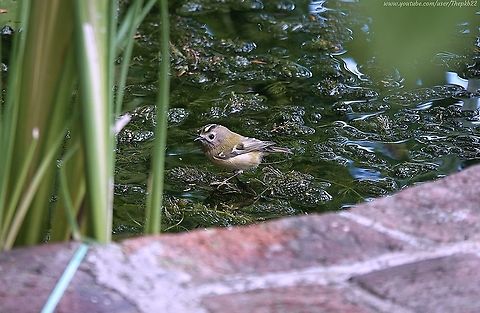
Food
All ''Regulus'' species are almost exclusively insectivorous, preying on small arthropods with soft cuticles, such as springtails, aphids and spiders. They also feed on the cocoons and eggs of spiders and insects, and occasionally take pollen.All species will catch flying insects while hovering. Although the similarly sized Goldcrest and Firecrest are often found together, there are a number of factors that minimise direct competition for food. Goldcrests prefer smaller prey than Common Firecrests. Although both will take trapped insects from spider webs on autumn migration, Firecrests will also eat the large orb-web spiders.
The Goldcrest takes a wide variety of prey, especially spiders, caterpillars, bugs, springtails and flies. Larger prey such as oak bush crickets and tortrix moths may sometimes be taken. Flying insects are taken in hovering flight but not nomally pursued; there is a record of a Goldcrest attacking a large dragonfly in flight, only to be dragged along by the insect before releasing it unharmed.
Goldcrests will occasionally feed on the ground amongst leaf-litter with tits. Non-animal food is rare, although Goldcrests have been seen drinking sap from broken birch twigs together with tits and nuthatches.
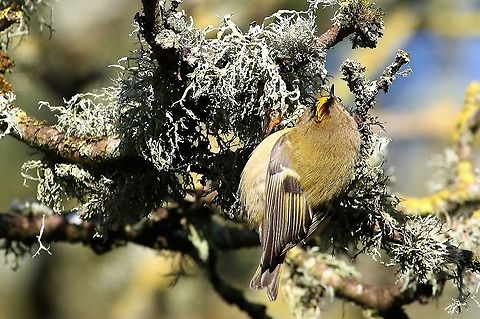
Predators
Throughout the Goldcrest's range, the main predator of small woodland birds is the Eurasian Sparrowhawk, which has a diet consisting of up to 98% of birds. Merlins, Tawny and Long-eared Owls also hunt Goldcrests. The erratic movements and flights of small woodland birds, which are vulnerable to attack while away from cover, may help to confuse their predators. The Goldcrest has only very rarely been recorded as a host of the Common Cuckoo, a widespread European brood parasite.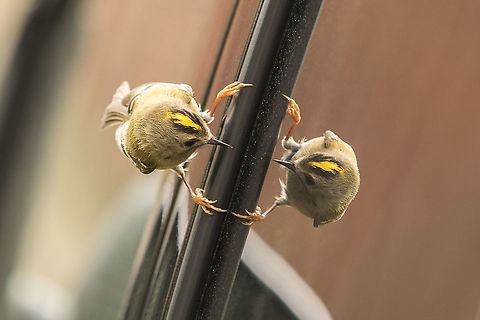
Evolution
There are a few Pleistocene records from Europe of extant ''Regulus'' species, mostly Goldcrests or unidentifiable to species. The only fossil of an extinct ''Regulus'' is a left ulna from 2.6–1.95 mya in Bulgaria, which was identified as belonging to an extinct species, ''Regulus bulgaricus''. The Goldcrest lineage diverged from this apparent ancestor of the Common Firecrest in the Middle Pleistocene.References:
Some text fragments are auto parsed from Wikipedia.